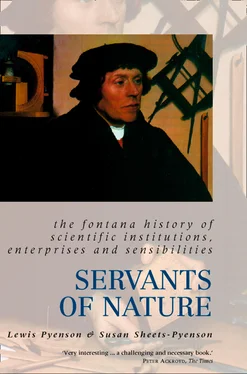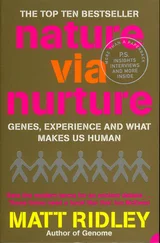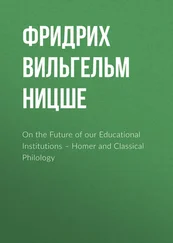They were products of elite universities and all enjoyed the privileges of accumulated honours, but they lent their voices to new institutions and assemblies. Kuhn was entirely Harvard educated, obtaining a doctorate in theoretical solid-state physics under John Hasbrouck Van Vleck (1899–1980); he sat in uneasy harmony between history and philosophy at the University of California at Berkeley (where an inheritance allowed him to reduce his teaching obligations) until in 1964 he moved to a programme at Princeton tailored to his measure. He helped Charles C. Gillispie (b.1918) steer the signal achievement of American scholarship, the Dictionary of Scientific Biography. Price obtained a doctorate in experimental physics from the University of London in 1946. A second doctorate in history of science came from Cambridge in 1954, following which he joined the singular company of scholars in history of science at Yale. He energetically supported new societies and new periodicals. Merton went from Temple University to Harvard, where he obtained a doctorate in sociology. He participated in launching the Center for Advanced Study in Behavioral Sciences at Stanford.
The three found their earliest and strongest voice in the seminal article, rather than the weighty tome, but all mastered general presentations as well as specialized analysis. Following a number of monographs (among which was his brilliant doctoral dissertation), in early middle age Merton produced collections on the sociology of science and social structure. After the profound but general study of Copernicus and the appearance of the Structure of Scientific Revolutions (1962), Kuhn issued a searching, technical analysis of the birth of quantum physics. Price published meticulous studies of clocks and calculators as well as collections of essays on measuring science.
Masters in the realm of ideas, from the time of their youth they were no strangers to practical matters. All three men were schooled in the arts of manual dexterity, and all three knew the vagaries of fortune in commerce. Thomas Kuhn’s father Samuel was a Harvard-and-MIT educated hydraulics engineer from Cincinnati, a veteran of the US Army Corps of Engineers who established himself in New York City, worked for a bank, and was active in the New Deal recovery. Samuel Kuhn was also a master woodworker, who trained his son in the use of hand tools; a perfectionist, he urged Thomas Kuhn to excel, and the scholar son recalled that he was influenced most by his father and Harvard’s James B. Conant (1893–1978). Derek Price’s father owned a clothing and haberdashery establishment in London’s West End. At the age of sixteen in 1938 Price was appointed physics laboratory assistant at the new South-West Essex Technical College, where in 1942 he received a bachelor’s degree. He taught evening classes in adult education while carrying out his own research for an external doctorate at the University of London. Robert Merton, the son of an immigrant carpenter, grew up in working-class South Philadelphia; while a teenage professional magician, he chose the name by which he is now known after considering other variations on ‘Merlin’. These tactile sensibilities are common themes among leading twentieth-century intellectuals. In their autobiographies, none less than physicist Albert Einstein (1879–1955) and philosopher Sir Karl Popper (1902–1994) have emphasized the importance of manual training.
Although they were not pacifists, Kuhn, Price, and Merton, like Einstein and Popper, avoided bearing arms during times of conflict. In the Second World War, Kuhn and Price, duly certified with an undergraduate degree in physics, carried out technical research – Price with South-West Essex’s Principal Harry Lowery (1896–1967, an expert in musical acoustics) on the optics of hot metals, Kuhn in the American-British Laboratory of the Office of Scientific Research and Development. Merton worked on military-related propaganda and psychological profiles in Columbia University’s Office of Radio Research and its successor institute, the Bureau of Applied Social Research.
Each master rose to the summit of the academic world after a short period of ministering in partes infidelium. Kuhn arrived at Berkeley in 1956 when the university there was still in the process of overcoming its provincial heritage. Merton left a lectureship at Harvard to become professor of sociology at Tulane University in New Orleans, from which he fled to Columbia in 1941. A postdoctoral Commonwealth Fund fellowship allowed Price to study theoretical physics at the universities of Pittsburgh and Princeton. From 1947 to 1950 the newly married physicist taught applied mathematics at Raffles College in Singapore, where he was briefly the colleague of the historian Cyril Northcote Parkinson (1909–1993).
Parkinson is famous for studying the flow of people at cocktail parties and for proposing laws regulating bureaucracies, for example, ‘work expands to fill the time available for it’. Parkinson’s search for social laws and mechanisms finds a counterpart in the life work of Kuhn, Price, and Merton. Kuhn’s description of scientific revolutions as an abrupt change from one worldview to another has brought the word paradigm (proposed earlier by Merton) to nearly the same level of recognition as Sigmund Freud’s (1856–1939) repression and Einstein’s relativity. 3 Price’s revival of the term invisible college (first used to describe a group of seventeenth-century natural philosophers) and his discussion of exponential growth (known to historian Henry Adams [1838–1918] around 1900) have led to a large industry involved with quantifying scientific achievement. 4 Merton’s elaboration of scientific norms and accumulated advantage (the Matthew Effect), his analysis of anomie in working-class America, and his pioneering development of such notions as the focus group , have made him the most widely known sociological thinker of our century.
One question attracted the interest of the three masters in the 1950s. This was the extent to which science depended on the unique contributions of isolated geniuses. They delved deeply into the phenomenon of simultaneous and multiple discoveries. A persuasive argument in favour of a social history of science would stem from the contention that notions or ideas were independent of the personal circumstances of a researcher, that particular interpretations of nature were in some sense the product of their time. The historical evidence the three men had assembled by the early 1960s demonstrated just this contention. The confluence of learned opinion, noted in Price’s book Little Science, Big Science , marks a turning point in the discipline of history of science. 5
By the late 1960s, the search for a general understanding of science, stimulated by the work of Kuhn, Price, and Merton, led to renewed interest in quantitative measurement and close scrutiny of scientific institutions and specialties. What were the pathways of authority in diverse disciplines located in special cultural settings? Did all disciplines and technologies function in one way? What were the practical conditions for consolidating a new discipline? How did the constraints on and opportunities for funding generate new research programmes? Do civil unrest and war stimulate or retard the generation of new ideas? Who is qualified as a researcher in science? How have educational institutions set the pattern for scientific research? Careful attention to these questions produced scores of sophisticated analyses and monographs. As the decade of the 1960s closed, history of science, as a learned enterprise, achieved an intellectual vitality envied by many and diverse commentators. 6
The end of science
In Thomas Kuhn’s understanding of science, major changes can occur within a particular discipline. That is, new visions of the world do not necessarily destroy the social structures that may have nurtured them. Kuhn also wrote about how disciplines change form, capturing problem areas from neighbouring fields of study and abandoning special pursuits to a new group of researchers. The late twentieth century has witnessed unusual ferment in the evolving taxonomy of scientific disciplines. New disciplines like computing and cognition have taken away large areas of mathematics and psychology. Physicists lament hard times much as classicists complained about declining interest in their discipline a century ago. Most of all, we see the proliferation of an astonishing variety of technical discipline, complete with trade journals and academic programmes. Science is not a victim of its own success, as has been claimed; rather, the times promote technology.
Читать дальше












